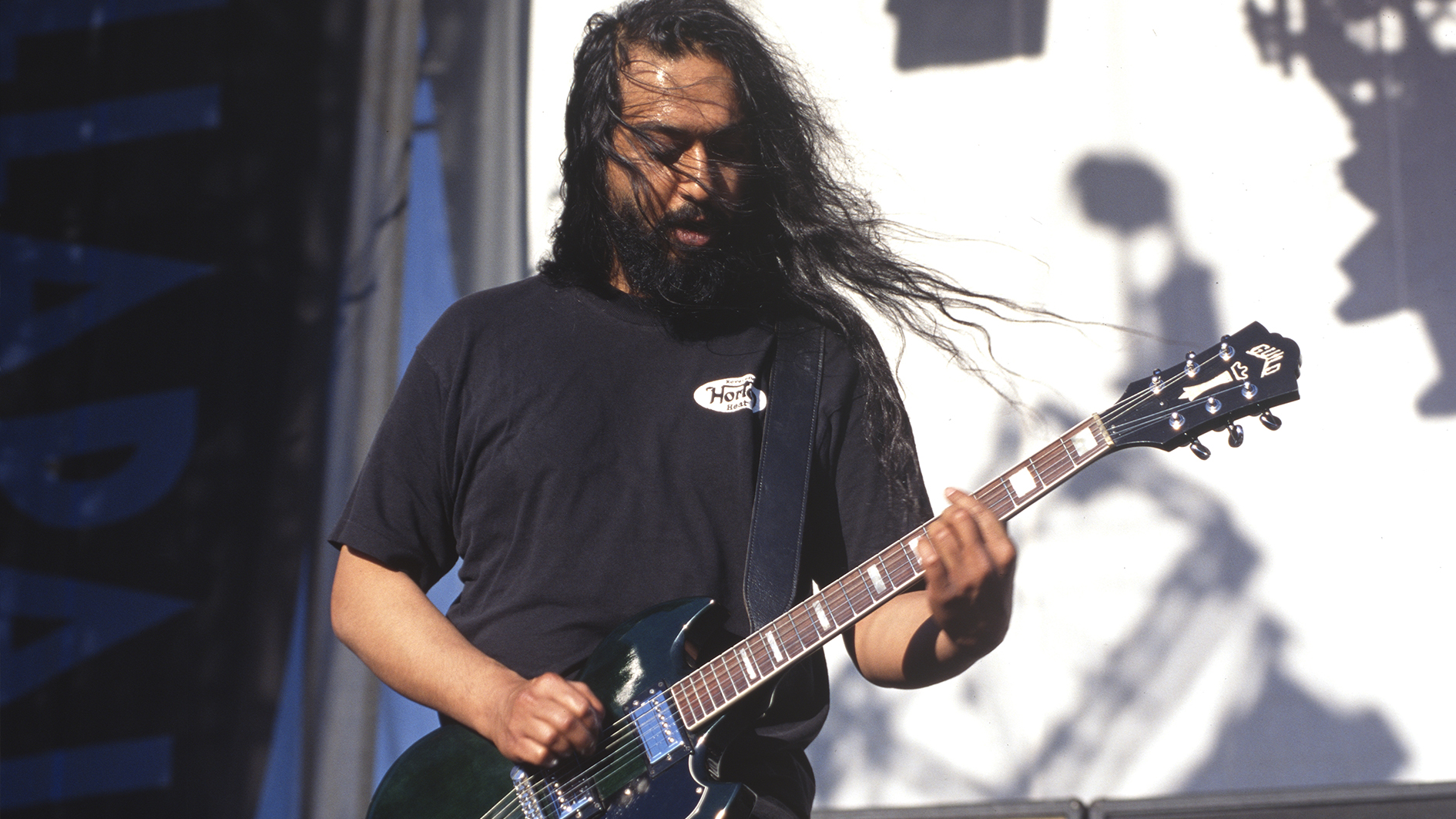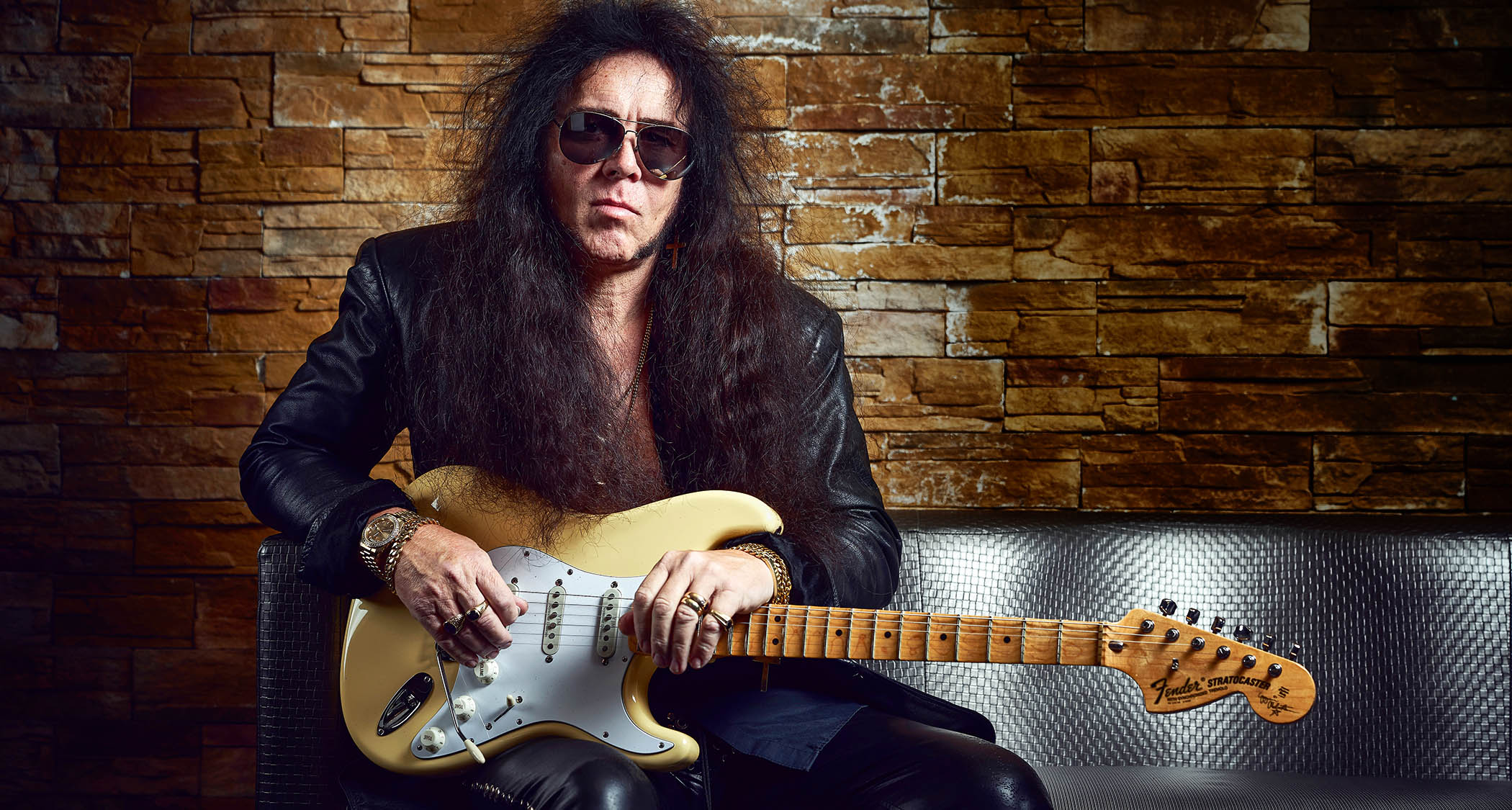“We’re doing this because Black Sabbath did it. Neil Young did it. Van Halen did it. Are you going to tell Eddie Van Halen he wasn’t playing guitar properly?” Soundgarden’s Kim Thayil recalls his battles with drop-D trolls
Thayil brought drop-D tuning to the mainstream with the grunge guitar revolution – but he had to contend with “purists and nitwits who would write into guitar magazines saying, ‘Drop D is cheating; you’re not really playing if you do that!’”

While it came of age in the ’90s, drop-D tuning was around long before the grunge explosion made it a rite of passage for guitarists. The Beatles’ I Want You (She’s So Heavy), Led Zeppelin’s Moby Dick and Van Halen’s Unchained all slackened the guitar’s lowest string for extra muscle.
But in Seattle, whisperings of this mystical gateway to heavier, more sinister riffs spread like wildfire, and the alternate tuning soon became a staple of the city’s premier musical exports – although as Soundgarden guitarist Kim Thayil recalls, not everyone in the wider guitar community was thrilled with the development.
Along with frontman Chris Cornell, Thayil was one of the guitarists who brought drop-D tuning into the limelight with classic, MTV-bothering Soundgarden cuts such as Jesus Christ Pose, Outshined and Spoonman. And in the latest issue of Guitar World, the idiosyncratic lead player recalled how he first came across the tuning – and the surprising backlash that followed.
“I was friends with Mark Arm [of Mudhoney fame] back in college,” Thayil recollects. “I don’t think Mudhoney were around at that point; I was in Soundgarden and he was in Green River. Buzz [Osborne] from the Melvins was hanging out a lot, too.
“One time we started talking about our favorite Sabbath songs and Buzz told us about this tuning Tony Iommi used called ‘drop D’ that made everything sound darker and heavier. I remember going home and being like, ‘Whoa, you don’t say!’ I started farting around and realized you could make a power chord with just one finger. Playing them really fast up and down the neck became easy.”
Yet as Thayil was about to discover, that ease of movement wouldn’t go down well with guitarists for whom EADGBE was The One True Tuning.
“It’s funny; I remember these purists and nitwits who would write into guitar magazines saying, ‘Drop D is cheating; you’re not really playing if you do that!’” he laughs.
Get The Pick Newsletter
All the latest guitar news, interviews, lessons, reviews, deals and more, direct to your inbox!
“I’d be sitting there wondering, ‘What do you think this is... Monopoly?! Is it like “do not pass go” or “head straight to jail” just because you don’t approve of that tuning? What do you mean it’s not a proper way of playing guitar? No wonder you’re sitting there writing angry letters to a guitar magazine instead of writing songs!’”
By this stage, drop-D tuning was a mainstay of the Seattle sound. Jerry Cantrell learned it from Thayil – who he later dubbed the best guitar player of the Seattle scene – and it dominated Alice in Chains’ 1992 opus Dirt. It also crops up on Pearl Jam’s Ten, while Kurt Cobain – who was himself a huge Soundgarden fan – used it from the outset of Nirvana’s career right up to later hits like Heart Shaped Box.
It was such a crazy thing to say: ‘Those Seattle grunge guys are cheating because it’s easier playing in drop D!’
To casual observers – more specifically, folk who wrote into guitar magazines in the early ’90s – it might have seemed like a sea change in guitar tuning. But as Thayil observes, drop D had already been around for some time.
“It was such a crazy thing to say: ‘Those Seattle grunge guys are cheating because it’s easier playing in drop D!’” he reflects.
“I’d be thinking, ‘Thank you, and you’re right, more people should be experimenting and having fun! Oh, and by the way, we’re doing this because Black Sabbath did it. Neil Young did it. Van Halen did it. How far back are we going? Are you going to tell Eddie Van Halen he wasn’t playing guitar properly?’”
Regardless of its classic-rock roots, it’s not an exaggeration to say drop D would prove life-changing for Thayil, and alternative music as a whole.
“I went home from Mark’s that night and wrote Nothing to Say,” he explains. “I brought it to practice with Soundgarden the next day, saying, ‘Buzz showed me a Sabbath tuning and I came up with this!’”
Nothing to Say would feature on Soundgarden’s 1987 debut EP, Screaming Life, and its sledgehammer riff, teamed with Cornell’s banshee wails, made waves in Seattle and beyond. The band were immediately galvanized by Thayil’s discovery – and it set the stage for the next phase of their psychedelic Sabbath-meets-Beatles sound.
“Chris and our first bassist Hiro [Yamamoto] were like, ‘Whoa!’ with their jaws dropped open,” Thayil recalls. “Chris got excited and said he had just the right lyrics to fit that idea, so he ran into another room and grabbed a pen.
I loved the unorthodox way we were approaching heavy music… Heavy metal and drop D is a match made in heaven
“This thing was dark, psychedelic and trippy underneath Chris’s majestic voice. It generated a lot of attention from major labels and made me want to write more things like that.
“I loved the unorthodox way we were approaching heavy music. It almost feels like songs like Outshined simply wouldn’t have existed in standard. Heavy metal and drop D is a match made in heaven... it just works.”
To read Kim Thayil’s full interview and a host of other ’90s guitar revelations, check out the new issue of Guitar World, available from Magazines Direct.
And for more from Thayil on pivotal moments in his career, have a read of his guide to Soundgarden’s landmark guitar moments.
In other Thayil news, the guitarist was finally awarded with his own signature Guild S-100 this month, after three failed attempts and three decades of waiting.

Mike is Editor-in-Chief of GuitarWorld.com, in addition to being an offset fiend and recovering pedal addict. He has a master's degree in journalism from Cardiff University, and over a decade's experience writing and editing for guitar publications including MusicRadar, Total Guitar and Guitarist, as well as 20 years of recording and live experience in original and function bands. During his career, he has interviewed the likes of John Frusciante, Chris Cornell, Tom Morello, Matt Bellamy, Kirk Hammett, Jerry Cantrell, Joe Satriani, Tom DeLonge, Ed O'Brien, Polyphia, Tosin Abasi, Yvette Young and many more. In his free time, you'll find him making progressive instrumental rock under the nom de plume Maebe.
“There’d been three-minute solos, which were just ridiculous – and knackering to play live!” Stoner-doom merchants Sergeant Thunderhoof may have toned down the self-indulgence, but their 10-minute epics still get medieval on your eardrums
“There’s a slight latency in there. You can’t be super-accurate”: Yngwie Malmsteen names the guitar picks that don’t work for shred












